Matt Leasegang restored a Kenevans funny bike with an obscure history that eventually revealed a long list of owners. Each owner drawn to the custom made pedigree of this experimental road time trial bike. On the 29th of December 2012, Matt Leasegang spotted a maroon and white funny bike for sale, it's mutilated Reynolds 753 rear triangle bearing the malicious imprint of desperate measures. This frame was a workhorse, a prototype and at one moment in it's history the experiment had backfired.
The seller, Stuart Phelps wrote "Just throwing the feelers out there for anyone interested in a low pro project .... It's a 55x55cm frame and super aggressive. Hit me up for price if you're interested." Matt being a sucker for any bike that's not run of the mill, responded. "This is a baller my friend. I'd be keen but I literally have a LOW// on it's way. PM me a price though, I can always be persuaded." Matt certainly was persuaded despite having a LOW on it's way, but what he didn't know at the time, was that this funny bike was once raced by Murray Donald at the Commonwealth Games in Edinburgh and one of a set of the first Reynolds 753 Kenevans funny bikes built in Australia by MalMcPherson. If that wasn't enough, for the last two years, this bike has become a major obsession in Matt's life, Murray and myself have the overflowing email inboxes to prove it! Matt's hounded just about anyone who ever had anything to do with this bike and he's still on the hunt for information about it's history.
When Reynolds began to supply 753 RACE tube sets to frame builders, Reynolds weren't going to let just anyone build frames with their special double butted, cold drawn, seamless manganese molybdenum alloy tubes. Reynolds produced special fork blades to compliment their most exclusive frame tubes, wide oval shaped, taper gauged fork blades, with a plain gauge steerer, head tube and stays. By the time MalMcPherson and Ken Evans had jumped through the Reynolds hoops, submitting weld joint tests to qualify for authorisation, Reynolds were boasting that their tubes were
Race proven by world champions and winners of the Tour de France as the ultimate racing set for almost all conditions.
Reynolds further implied that 753 RACE would out perform any other material available in that era, including titanium, carbon fibre and aluminium alloy. MalMcPherson received his Reynolds authorisation certificate in early 1986, but months earlier he'd already received verbal authority to build frames using Reynolds 753, after submitting successful weld joint tests. Under the strict supervision of Ken Evans at the Kenevans Moolap workshop, Mal McPherson was given the job of producing five funny bikes for the Queensland Cyclists Association, paid for by the Milo sponsorship. Two Large, two medium and one small bike were commissioned, all painted in Milo corporate colours, green, white and brown, just like a paper wrapped Milo tin.
When the Queensland cycling teams time trial team of Kerry Carmichael, Greg Dwiar, Jeff Leslie and Keith Lane rolled up to the start line of the Australian national teams time trial championships at Bacchus Marsh on Sunday the 17th of September 1985, they caused a minor sensation. No one had ever seen a road funny bike at a national team time trial championship before. Geoff Scott, custom frame builder had built funny bikes for the Australian team competing at the Brisbane Commonwealth Games in 1982.
This was at a time in Australian road racing history where there was an AIS programme setup for track cycling, but if you were a road cyclist, you were on your own. So in 1986 when the Queensland team of Jeff Leslie, Murray Donald, Steve Rooney and Greg Dwiar were selected as the team to represent Australia in the teams time trial at the Edinburgh Commonwealth Games, the Australian Cycling Federation requested that the Queensland Cycling Association loan the Milo funny bikes to the Australian Cycling Federation (now Cycling Australia) for that event. The Milo bikes were then stripped of their Milo corporate colours and painted in Australian colours, yellow with green forks and a green head tube. The day before the race at Edinburgh, the riders were given Shimano Dura Ace group sets as part of an ACF sponsorship from Shimano. It was left to the riders themselves to swap the original Galli group sets for Shimano. The arrangement was so rudimentary the riders completed this work out the front of their hotel. Araya discs were borrowed from the track team, apart from the Shimano groupsets there was no equipment available for road riders in those years. I remember the following year, I rode the teams time trial world championship at Villach in Austria and again we borrowed the Araya discs from the track team. That year we also supplied our own bikes, I borrowed mine from a Swiss triathlete.
The problems with swapping group sets and wheels into an experimental funny bike, the day before a race, became amplified the next morning when the team lined up for the race. The clearance on Murray's bike was tight and with different tyres, this new combination hadn't been tested before. The rear wheel would barely turn, rubbing on the chain stays. Spanners, kicks from the boot, screwdrivers, tyre levers, anything they could lay their hands on in a desperate attempt to get Murray's bike to move freely, but to no avail. Murray started the race with the bike feeling like the brakes were on. This was the key to identifying which of the Milo bikes that Matt was restoring. Steve Rooney witnessed the desperate attempts to make the wheel turn that day in Edinburgh, and clearly remembered particular dents in the chain stays.
After the Commonwealth Games Joe Cosgrove would build an extra funny bike for the Queensland Cyclists Association. A replacement commissioned by Mick Glindemannn for the one that was damaged, a triple triangle version, built using Ishiwata tubing. Joe also stripped the green and gold paint from all of the bikes and was responsible for painting them in the Sunny Queen Eggs, maroon and white colours. The third paint scheme in just over twelve months and that's the way they stayed. The Frezoni Ishiwata version is still kicking about Brisbane, painted fluoro pink and setup as a flat bar town bike. Joe said that he'd improved on the original Kenevans design, remarking that in his opinion the head tube was too short in the 753 frames, making the bikes lower than they ought to have been and changing the geometry. According to Joe, the riders complained that this made the bikes difficult to turn, especially at the ends on an out and back course.
Gypsy's Frezoni commuter from Gavin Bannerman on Vimeo.
By the time Matt bought the Milo bike from Stuart Phelps, it had passed though many hands. After the Edinburgh Commonwealth Games, the bikes were used by Queensland road time trial riders until the early 1990's. Somewhere along the way there was a disaster with the head tube on the Milo bike that Murray rode, a gnarly weld had been applied to the lug at the main bar head tube junction.
After years of racing Matt's Milo bike disappeared into obscurity. It's not certain what happened to the others, Mick Glindemann had already sold one of them off straight after the Commonwealth Games, so we can only follow the story of the one that Matt has now. Some remembered it being at Brisbane Bicycle Sales, and at one time Mick Wilkinson added the Milo time trial bike to his collection of many bicycles. Mick never did anything with it and according to Adam Pelzer, Mick had so many bikes he wouldn't have remembered owning it. Adam Pelzer was the next custodian after Mick, Adam had the Milo bike laying about his place for a while but never got round to doing much with it so Adam sold it to Stuart Phelps. It looks like Stuart fiddled with the decals and some components, but that was it. When Matt got his hands on the battle scarred Milo bike it's early history as a race bike stood out as the defining factor. The disfigured seamless manganese molybdenum alloy Reynolds tubes, dented and pitted, yet the frame was salvageable.
Apart from endlessly pestering Murray and myself for info, Matt's main job was to work out an authentic parts list from the Milo era, gather up these parts and get the bike repaired and re-painted in the Milo colours.
Joe Cosgrove got to work and stripped the Sunny Queen Maroon paint and hipster decals from the Reynolds tubes. Next Joe replaced the damaged lugs and head tube, then followed up with hours of filling and sanding. Joe's aim was to retain some visible signs of the Milo bike's savage history, and at the same time strike a balance with a new clean aesthetic. Once Joe had coated the Milo bike in it's original green and white colours, it was up to Matt to design and produce the brown Milo decals. Brad Marshall, creator of the Loose Goose, custom cut Matt's best interpretation of the Milo decal.
Nineteen months after Matt bought the Milo bike from Stuart, he finally put all of the pieces together and was now running around like a chook with it's head cut off, trying to get the bike ready to display for Pushies Galore 2014. There had been so many small details, components that arrived and weren't the same as what the seller had described. The FT Titanium Super Rolling hubs never seemed like they'd be right, with endless polishing and re-finishing the surface. Matt's perseverance paid off and we were able to proudly display the finished Milo bike at our Velo Aficionado stand at Pushies Galore. Murray Donald was there and saw the finished bike for the first time, also Mal McPherson who'd built the Kenevans frame. It was great to see the frame builder and bike rider together with Matt's finished project.
A couple of weeks ago Murray, Matt, and myself took the Milo bike for a photo shoot and we all took it for a pedal. Murray was thrilled to ride the bike, he'd kept his original skinsuit and Adidas cycling shoes. Despite it's years of work and abuse, the finished Milo bike still has some life left in that old steel. Both Murray and myself were surprised at how lively the frame felt, it was a delight to ride.
A big thanks to the Milo team Murray Donald, Steve Rooney, Greg Dwiar and Jeff Leslie, especially Murray, for supplying photographs and answering the many questions. Also thanks to Mal McPherson, Joe Cosgrove and Adam Pelzer who helped complete parts of the puzzle. Matt's dedication in saving this historic bike from obscurity has stirred up some interesting discussions around Brisbane. We all have Matt to thank for preserving a bike which is historically significant to Australian road racing. One of the first four funny bikes to be raced at a national championship and representative of bikes from an experimental era. The stories that surround the journey of this Milo bike, confirmation of the hard road ahead before Australian road racing could mature to achieve the significant results enjoyed today.
Matt’s Milo Bike Spec
- FRAME Ken Evans Reynolds 753 RACE double butted, cold drawn, seamless manganese molybdenum alloy tubes, with a plain gauge steerer, head tube and stays. Built by Mal Macpherson, one of the first frame builders in Australia licenced to build with Reynolds 753. Bottom bracket Cinelli, stamped “0022 BUILT BY MAL MAC”. Suntour dropouts.
- FORK Ken Evans Reynolds 753, Built by Mal McPherson. Special wide oval shaped, taper gauged fork blades.
- PAINT Inspired and painted in Milo promotional colours, originally for the Queensland Cyclists Association team time trial team.
- DECALS Special custom decals by Matt Leasegang, prepared and cut by Brad Marshall, Matt’s best interpretation of the original decals from photographs.
- HANDLEBAR STEM 3ttt LA Record. Slightly later generation than the original, but close enough. Matt is using a slightly shorter stem than Murray had in the bike, so that Matt can ride the machine.
- HANDLEBARS : 3TTT Competizione Merckx Bend 42cm inverted and cut
- BAR WRAP Generic White Cotton cloth tape
- BAR ENDS Generic Chrome Plastic end caps
- FRONT BRAKE Galli Aerodynamic KL Titanium
- REAR BRAKE Galli Aerodynamic KL Titanium
- BRAKE LEVERS Galli Aerodynamic KL without Rubber boots
- BRAKE BLOCKS Generic as supplied with brakes
- FRONT DERAILLEUR Campagnolo Super Record circa 1982
- REAR DERAILLEUR Galli Aerodynamic KL
- JOCKEY WHEELS Galli
- DOWN TUBE SHIFT LEVERS Simplex Friction Levers circa 1985
- CHAIN Sedis Sedisport Gold
- CRANKSET Galli Criterium 170mm
- CHAINRINGS Campagnolo Nuovo 54T Outer and Campagnolo Nuovo 49T Inner
- CHAIN RING BOLTS Galli
- BOTTOM BRACKET Campagnolo Super Record 115mm Triple BB (For Frame clearance)
- PEDALS Galli Blue x Sachs Maillard
- TOE STRAPS Alfredo Binda
- TOE CLIPS Galli Medium
- FRONT HUB FT Titanium Super Rolling 32H
- QR SKEWERS FT Titanium Super Rolling
- REAR HUB FT Titanium Super Rolling 28H
- HEADSET Galli x Stronglight Plastic Headset
- FRONT RIM Nisi Laser 26c 32 Skip spoke radial lace to 16H
- REAR RIM Galli Top Top 700c 28H crows feet (2 cross drive side, radial non drive)
- TIRES Vittoria D’Alessandro 700c rear, Vittoria Special Pro 650c / 26”x19 “Racing team"
- SADDLE Black Selle Italia Turbo 80’s Vintage – Used
- SEAT POST Galli x 3TTT Fluted seat post
- FREEWHEEL Maillard 12-17T 6sp Sprint 700, the freewheel was an original part that Murray had kept, he gave it to Matt so that it could go back on the bike it came from.
- BOTTLE CAGE TA Industries
- FRONT and REAR BRAKE CABLES Generic white cables
- GEAR CABLES as above
- REAR DERAILLEUR OUTER GEAR CABLE Galli (Original off bike)
Photoset below of Matt's Milo bike, all images by Matt Leasegang himself.







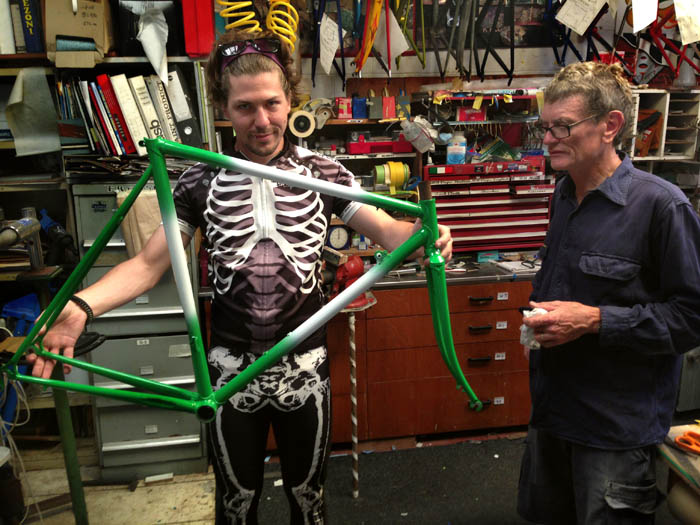



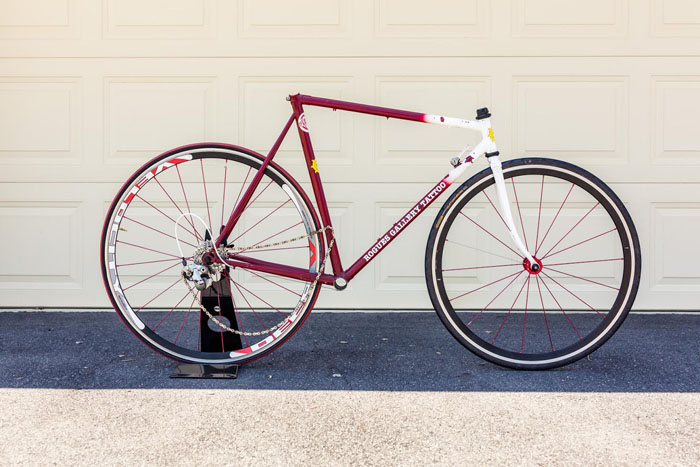



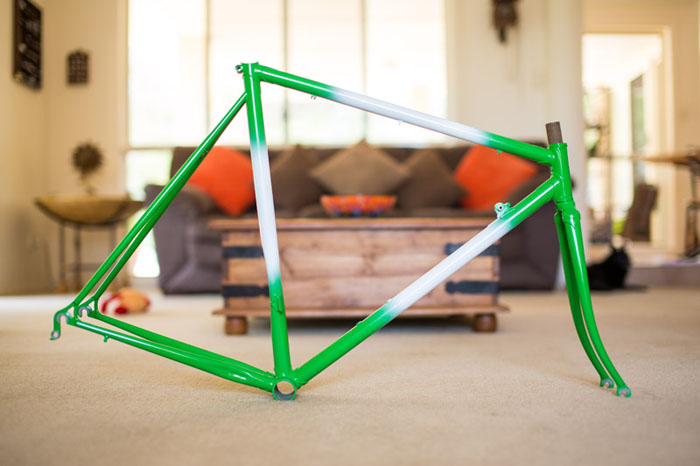
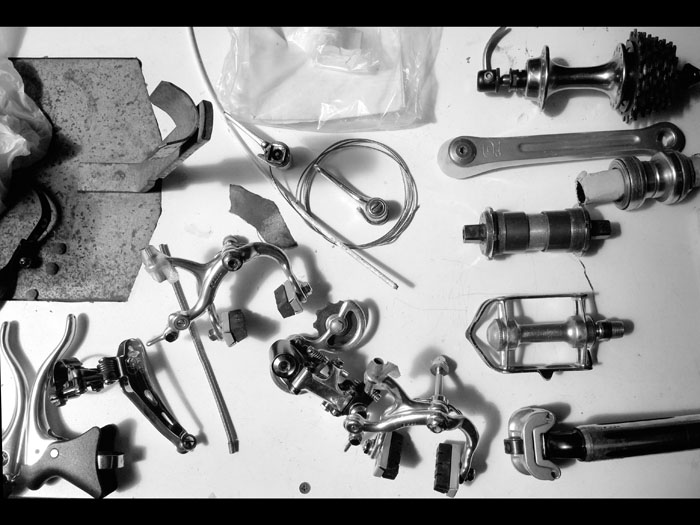




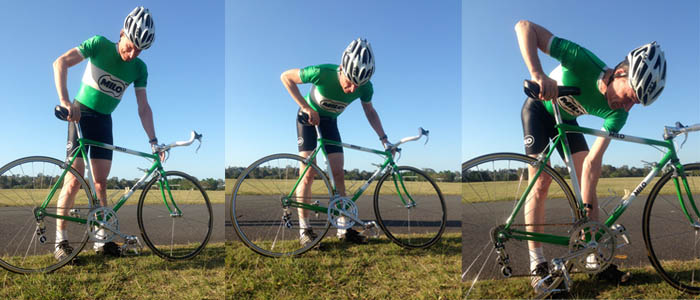



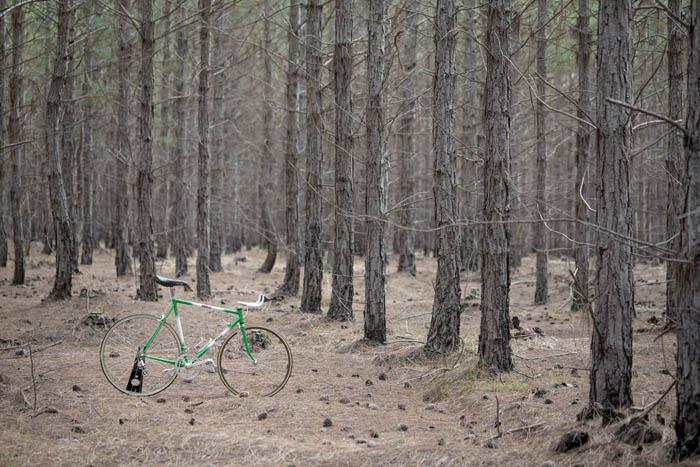
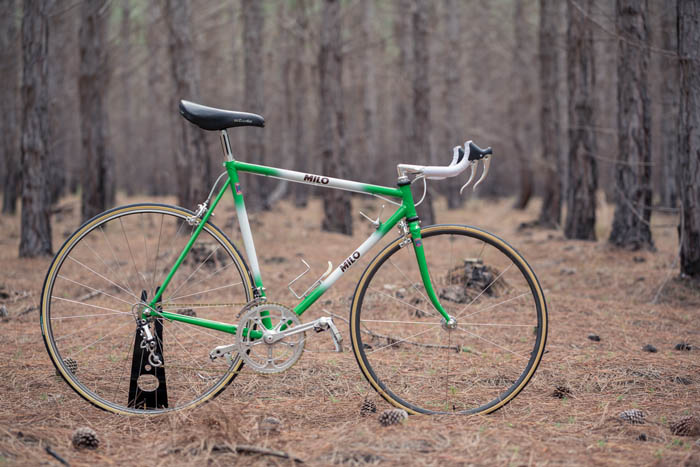
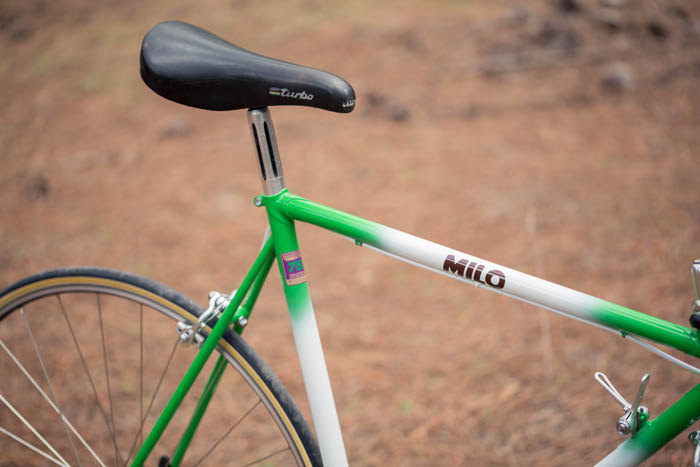











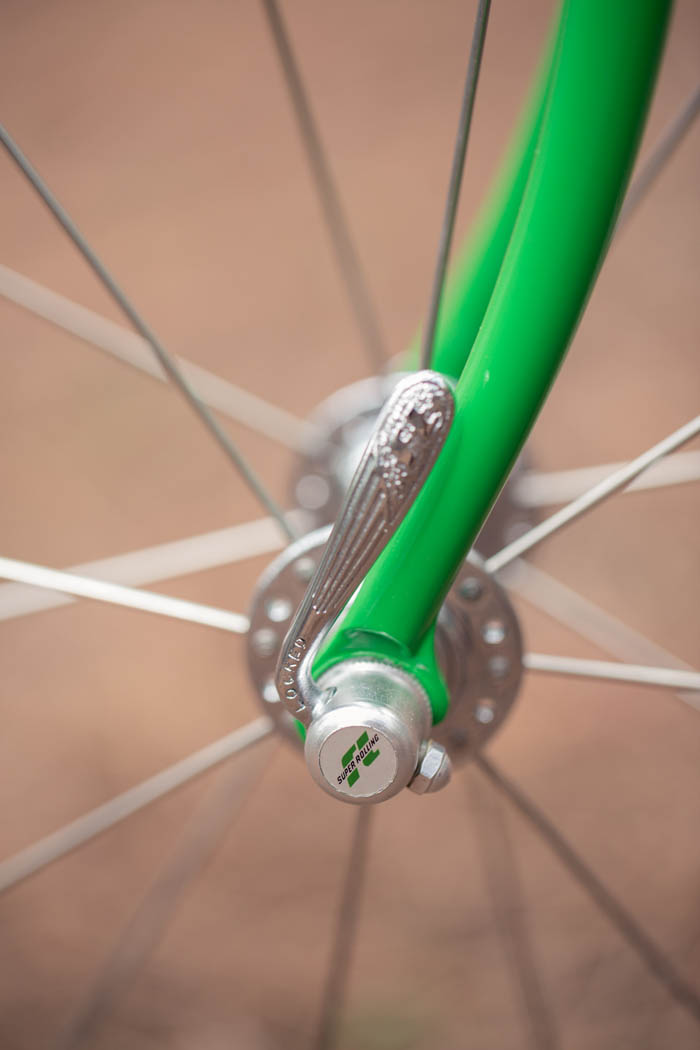


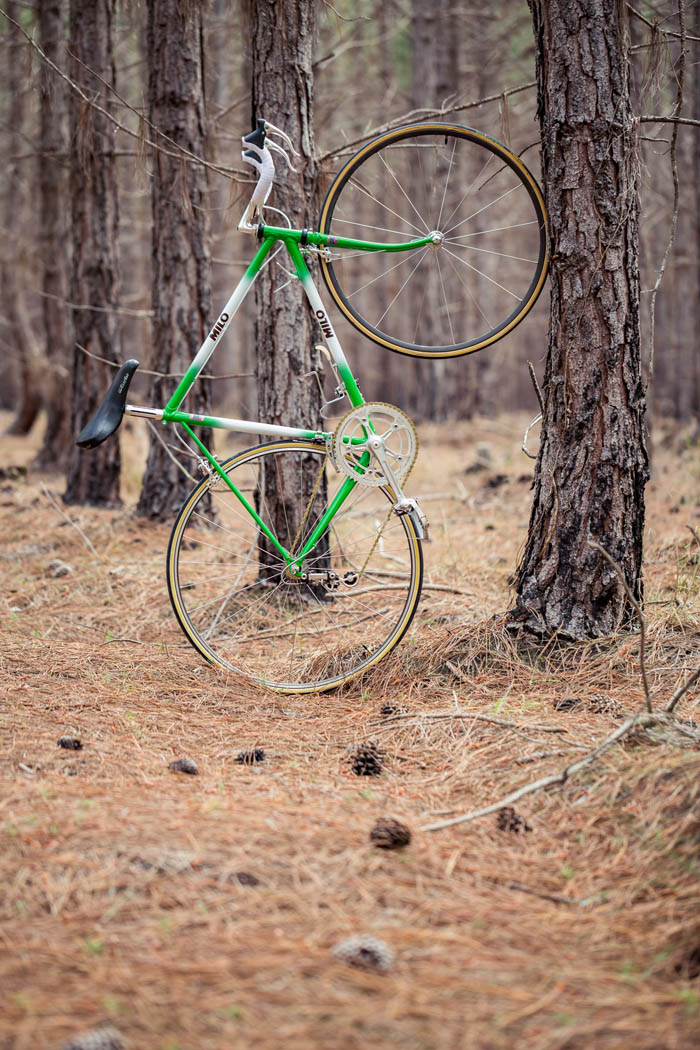

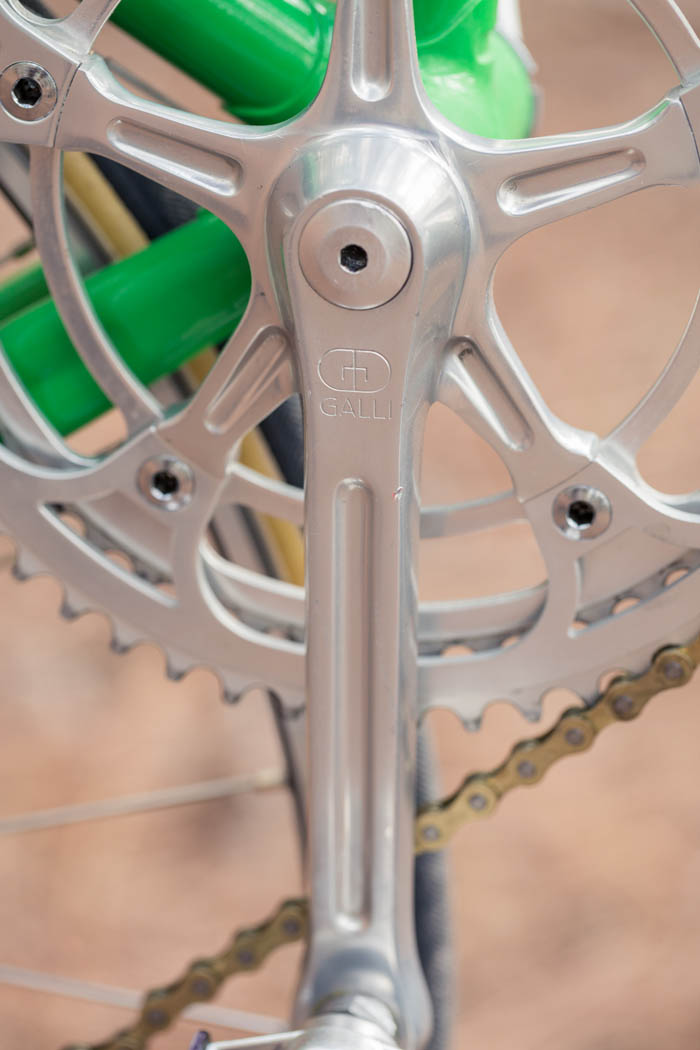














The history of Zurich frame builder Leo Estermann.